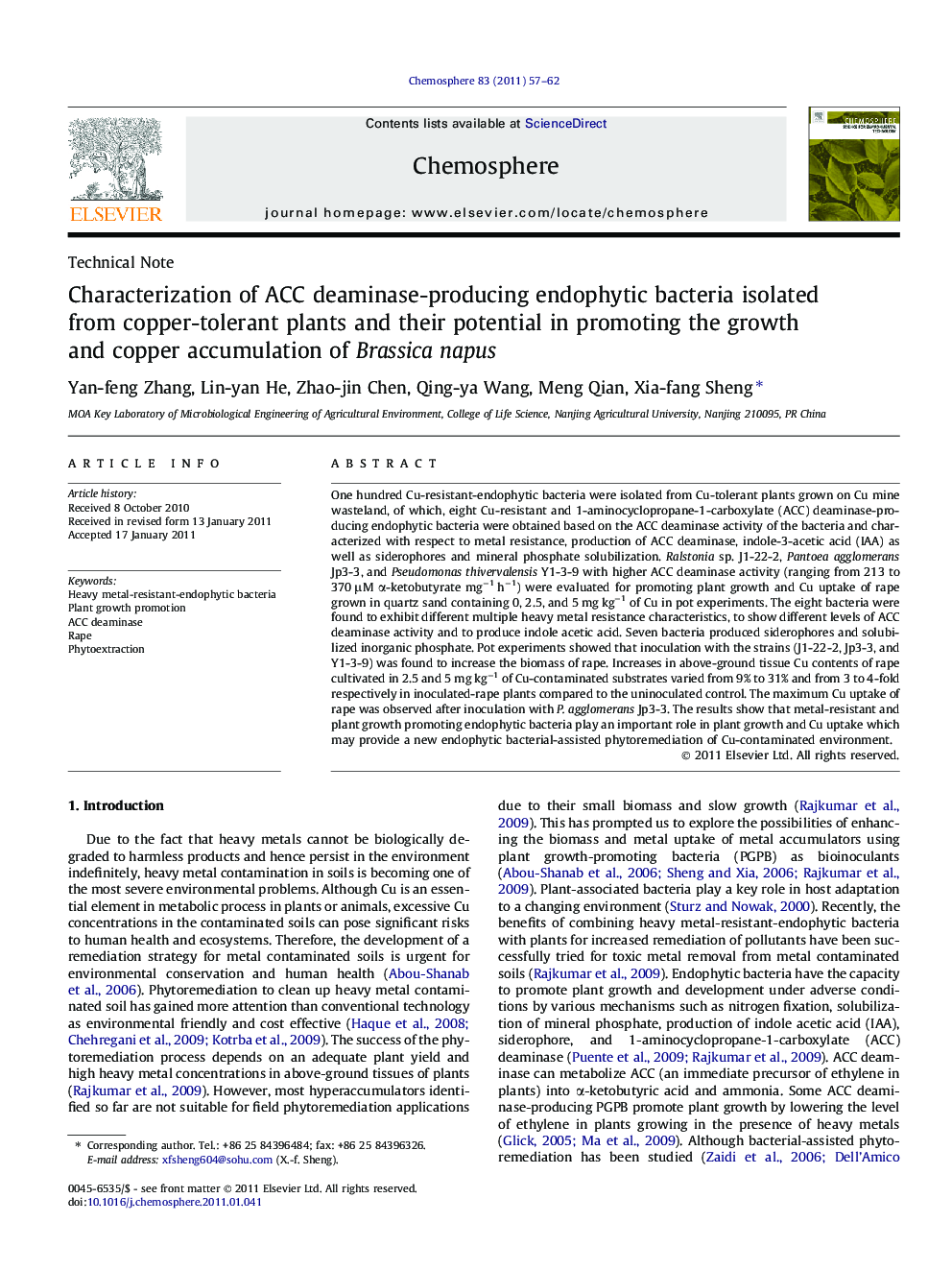| کد مقاله | کد نشریه | سال انتشار | مقاله انگلیسی | نسخه تمام متن |
|---|---|---|---|---|
| 4411193 | 1307582 | 2011 | 6 صفحه PDF | دانلود رایگان |

One hundred Cu-resistant-endophytic bacteria were isolated from Cu-tolerant plants grown on Cu mine wasteland, of which, eight Cu-resistant and 1-aminocyclopropane-1-carboxylate (ACC) deaminase-producing endophytic bacteria were obtained based on the ACC deaminase activity of the bacteria and characterized with respect to metal resistance, production of ACC deaminase, indole-3-acetic acid (IAA) as well as siderophores and mineral phosphate solubilization. Ralstonia sp. J1-22-2, Pantoea agglomerans Jp3-3, and Pseudomonas thivervalensis Y1-3-9 with higher ACC deaminase activity (ranging from 213 to 370 μM α-ketobutyrate mg−1 h−1) were evaluated for promoting plant growth and Cu uptake of rape grown in quartz sand containing 0, 2.5, and 5 mg kg−1 of Cu in pot experiments. The eight bacteria were found to exhibit different multiple heavy metal resistance characteristics, to show different levels of ACC deaminase activity and to produce indole acetic acid. Seven bacteria produced siderophores and solubilized inorganic phosphate. Pot experiments showed that inoculation with the strains (J1-22-2, Jp3-3, and Y1-3-9) was found to increase the biomass of rape. Increases in above-ground tissue Cu contents of rape cultivated in 2.5 and 5 mg kg−1 of Cu-contaminated substrates varied from 9% to 31% and from 3 to 4-fold respectively in inoculated-rape plants compared to the uninoculated control. The maximum Cu uptake of rape was observed after inoculation with P. agglomerans Jp3-3. The results show that metal-resistant and plant growth promoting endophytic bacteria play an important role in plant growth and Cu uptake which may provide a new endophytic bacterial-assisted phytoremediation of Cu-contaminated environment.
Research highlights
► Three endophytic bacteria with high level of ACC deaminase activity were obtained.
► The endophytic bacteria exhibit multiple plant growth-promoting characteristics.
► The endophytic bacteria could promote the growth and Cu accumulation of rape.
► Matching of PGPB and plant is important in the phytoremediation of Cu-polluted soils.
Journal: Chemosphere - Volume 83, Issue 1, March 2011, Pages 57–62